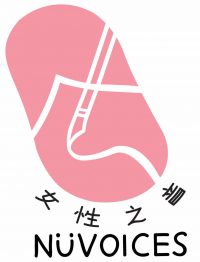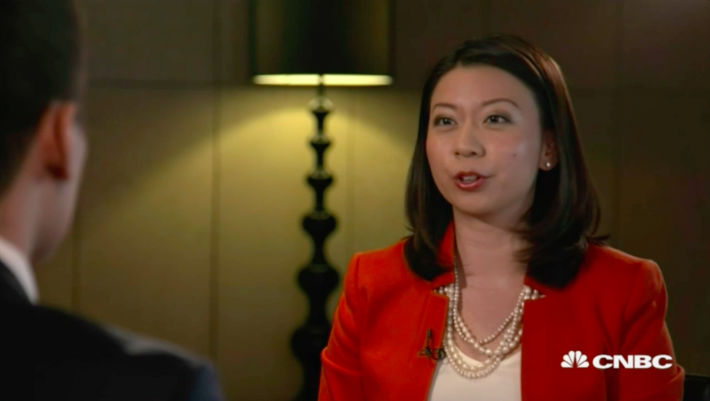BY SOPHIA YAN
Dear NüVoices family,
I started my career with high hopes of penning long magazines features but somehow ended up in the crazy fast world of live television. Journeying from print to broadcast was not without hiccups along the way! Here’s everything I found enormously helpful, and I hope you all will as well.
– Sophia, Development and Programming Coordinator for NüVoices
What’s the context?
Speak with the producer in charge of handling your hit to find out details about your segment – i.e. is it live or taped; is the anchor on set or remote; about how long are they looking at having you on for?
Live can sound a bit intimidating, but it’s all over in a few minutes! If taped, you may have a chance to repeat something succinctly if you stumble, but most organizations will generally prefer not to as they’re often too busy to edit. Aim for a clean take! Be aware that any taped segment can be edited: It’s unethical to mangle a soundbite – same as the ethics that govern how a person gets quoted in a story. But if you’re appearing on air for an organization that may possibly have a bias (i.e. a state media org, pundit talk show) know what you originally said could be changed.
On set with an anchor can feel more natural as you’ll be speaking to an actual human being! If the anchor is remote, you’ll most likely be standing or sitting with an ear piece and staring down the barrel – it’ll be like chatting with a mate by phone but you have to stare at the same black spot for a while. It’s ok to look away sometimes – we are human and your audience should feel they’re watching and interacting with a real person.
Make sure the earpiece fits your ear properly – too big or too small can slip out, and you want this to be comfortable, not distracting. If you have bizarrely-shaped ears like me and are doing these gigs regularly, consider getting a custom earpiece.
What are you going to say?
A producer will sometimes speak with guests in advance to get a better idea of your areas of expertise and to write anchor questions. This is an opportunity for you to provide some talking points. Even if this conversation doesn’t happen, feel free to suggest specific points you feel will be most important to bring up for the story – a producer will likely appreciate this.
Make a cheat sheet with bullet points, print it out in GIANT font, and take it with you. Once you’ve made it, chances are you won’t need it, but having it can help you feel more secure. Plus, if you do forget anything, it’s just a quick glance down to get back on track.
Stick to top line takeaways. Remember, you’ll probably only have 1-3 minutes to make your point, so think about the few things you want your audience to walk away knowing.
Also give some thought to how much context you might need to provide for the story to make sense. Again, you won’t have much time, so be judicious. If you have the capacity for this, it might be worth asking if any b-roll (footage) will be used while you’re speaking – visuals can impart a lot of information quickly so this may mean you don’t need to dive into much background.

How will you say it?
Put big numbers (i.e. area, population, $$ figures) in colorful, but appropriate context for your audience.
- “China is a massive country – about 14 times the size of Texas.”
- “Apple is the world’s first $1 trillion company. That’s more than double what Microsoft was worth at its peak”
- “Russia has two-and-a-half times more people than Italy”
Speak at a conversational pace, and be conversational!
Don’t fidget, but act natural. Use your hands, be expressive, have inflection in your voice, emphasize important words. Remember to pause and breathe between sentences!
Take a little cup of water with you and have a sip before you start to calm your nerves and to prevent having to clear your throat.
If a question comes out of the blue and you’re unsure how to answer, simply acknowledge and redirect. For example: “Interesting point you raise…What I’d really like to bring your attention to is…” “That has come up before…What’s important to consider here is…” Think about how you’d do this so it comes naturally if needed.
Drag any “umm” or “uhh” out to an “and!” For instance: “The summit has ended…. Uhhhhannndddd… President Trump is expected to do X….”
And don’t be afraid of dead silence. It’s the anchor’s job to keep the conversation going, not yours. A pause before the anchor picks back up is usually due to a delay in the signal, but sometimes it’s because the host is waiting to see if you’ll say more – common tactic. If you’ve finished making your point, stop talking!
Clothes?!?!##$%!! Makeup?!!
Everything you know about dressing professionally for any work setting applies.
Solid colors flattering to your skin tone are great. Consider whether you’ll looked washed out, and avoid colors that blend with your skin or hair. Foolproof: Jacket with a colored top underneath. Very easy to hide all the wires!
As with everything, dress appropriately for the story and setting – what you wear in a studio analyzing the latest Brexit developments will be different than if you’re out in the field amongst a crowd of rowdy protesters getting tear gassed.
Running and hiding wires is easier with a two-piece outfit, but if you do have to lift up a dress or any clothes to deal with the wires, turn away from the camera. You never know if that shot is going somewhere!
Beware of flimsy fabrics – silk may be beautiful, but sweat stains can be more visible, anything thin will sag under the weight of even the tiniest clip mic, earpiece clip etc., and wires will create unsightly bumps.
Nothing flouncy or busy – awesome in person, likely baggy/messy/distracting on camera. Fitted, clean lines are best.
Makeup: Powder, powder, powder! Everyone looks shiny under the lights. Features can also be washed out, so try eyeshadow, mascara, blush, lipstick. Pick one or two features to highlight. Some organizations will be able to do studio makeup, but don’t assume this will happen – there might be a time crunch, your slot might get moved up, the makeup artist might be on holiday, or in cases of small bureaus there won’t even be makeup! Bring what you use along with a compact mirror and do a quick check under the bright lights.
Beyond matching makeup to your skin tone, you can also pair it with your clothes. Think complementary colors, color wheel basics. Give me a shout if you’d like specific ideas!
Hair: Neat, and not in front of your face. Use a little product (anything works: gel, spray, pomade) to smooth baby hairs at your part and ends of hair. Volume on top is good – you can old-school backcomb tease under layers or spray a bit under the top layer of hair, scrunch up and then pat smooth over the top. If you’re good with styling your hair (blowout, curling/flat irons) then go for it. Whatever you do, keep it natural and easy. this isn’t the time to break out ringlets if you’ve never done it before!

Where do the wires go?
Mic: Secure the transmitter to a belt, back of your pants/skirt, underneath on your bra strap, on a pair of bike shorts under a dress (sturdy!), or drop it in a pocket. Then snake wire up your back and clip the mic on the front by your mouth – make sure your hair doesn’t brush over it. Best to hide this under clothes/jacket but if you prefer to run the wire over your clothes along your back, tuck the wire on the front under the neckline of your top.
Earpiece: Clip it to your top behind your neck and stick the end in your ear, whichever one you use for the talking on the phone. The other end plugs in so that you can hear the anchor. You can clip this to your top and hide the wire under a jacket if you’re wearing one.
Ask a woman for help if you need it – I’ve often found men are a bit clueless about how all this works with women’s attire and are very sheepish about telling you to stick something up your dress!!
Going on radio?
Everything above still applies, minus looking camera-ready. Just look professional as you would in any other work setting.
Without visuals, you may have to be more descriptive with on-the-ground color.
You can look in any direction, though looking toward the host can help with the conversational feel. After all, anyone tuning in will be listening to a conversation between you two.
Last thoughts
Remember to breathe! You’re the expert who has been invited to give your take, so remember that, take a deep breath, square your shoulders and do your thing!
About the author
Sophia Yan is China correspondent for the Telegraph Media Group. Her work examines the global impact of the country’s rapid and complex rise, focusing on government, economy, human rights, gender equality and innovation. Highlights include leading live coverage of China’s annual legislative meetings from Tiananmen Square and the World Economic Forum in Dalian, as well as interviewing venture capitalist Kai-Fu Lee, filmmaker Zhang Yimou, Google DeepMind CEO Demis Hassabis and football club Inter Milan director Steven Zhang. Sophia was previously a correspondent for CNBC in Beijing and filed from Japan as an Abe Journalist Fellow. She has also worked for CNN, Bloomberg, and the AP based in Hong Kong, Washington DC and Honolulu. Website: www.sophia-yan.com/ Twitter: @sophia_yan


